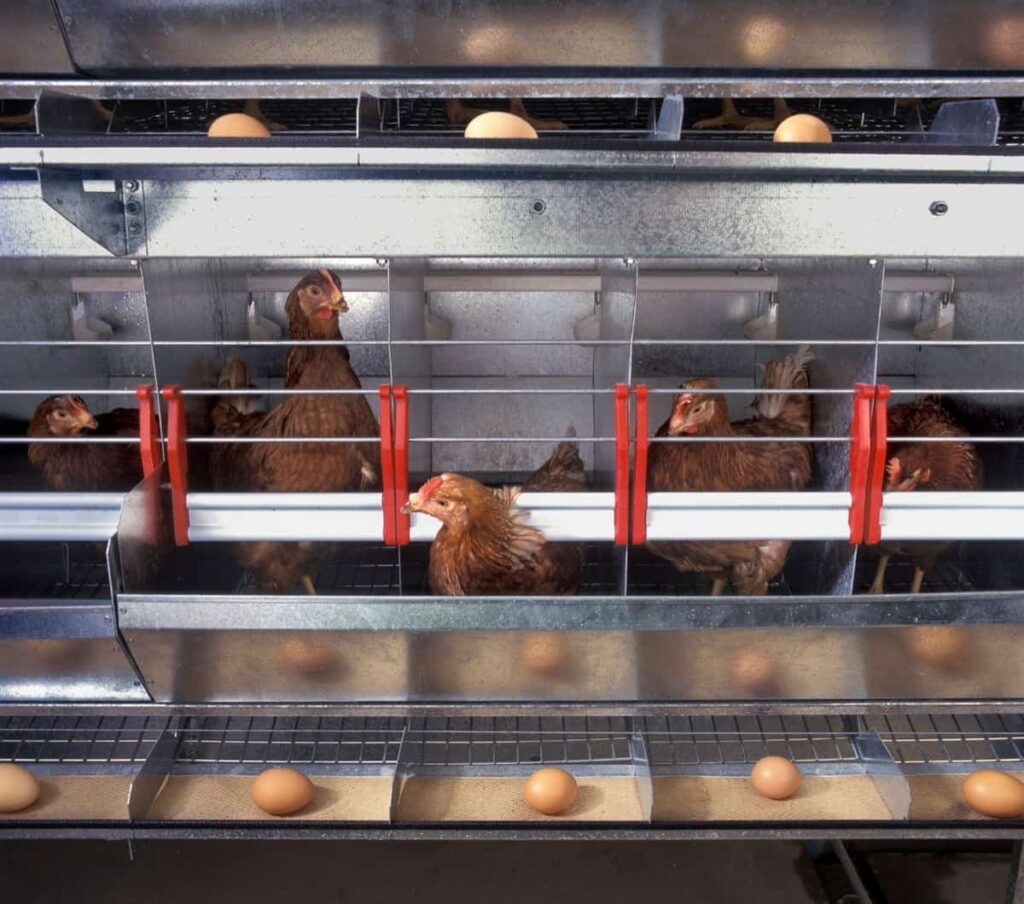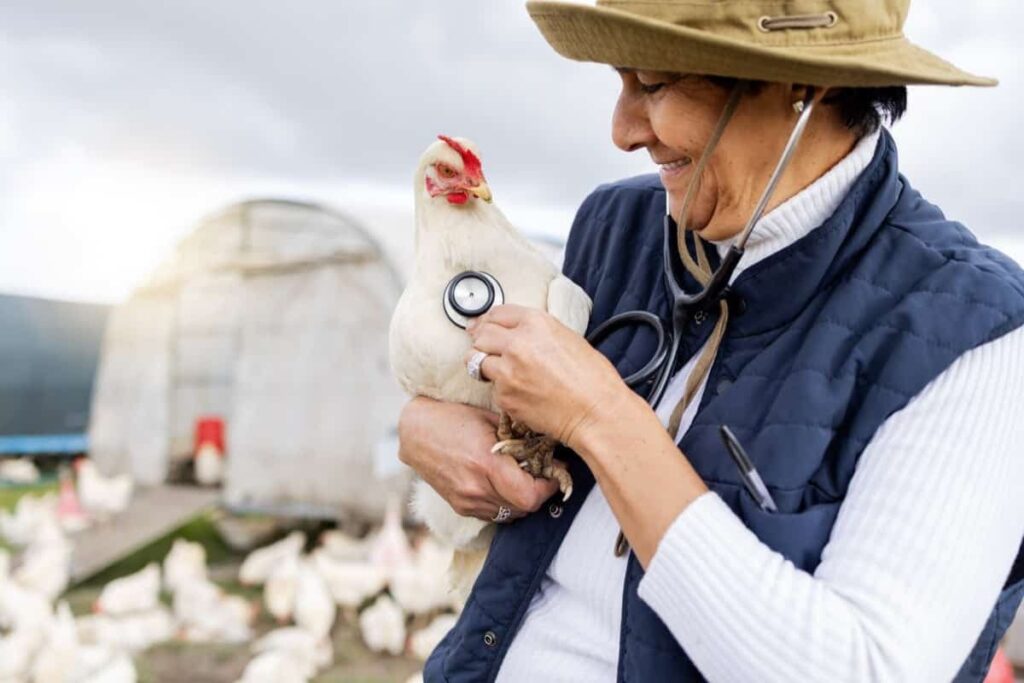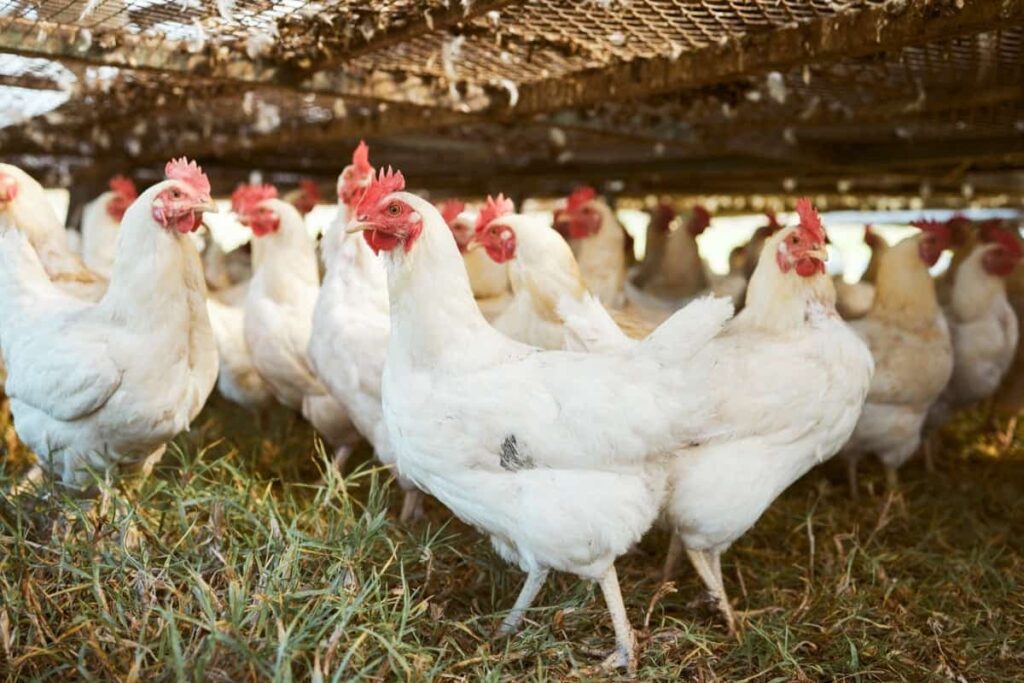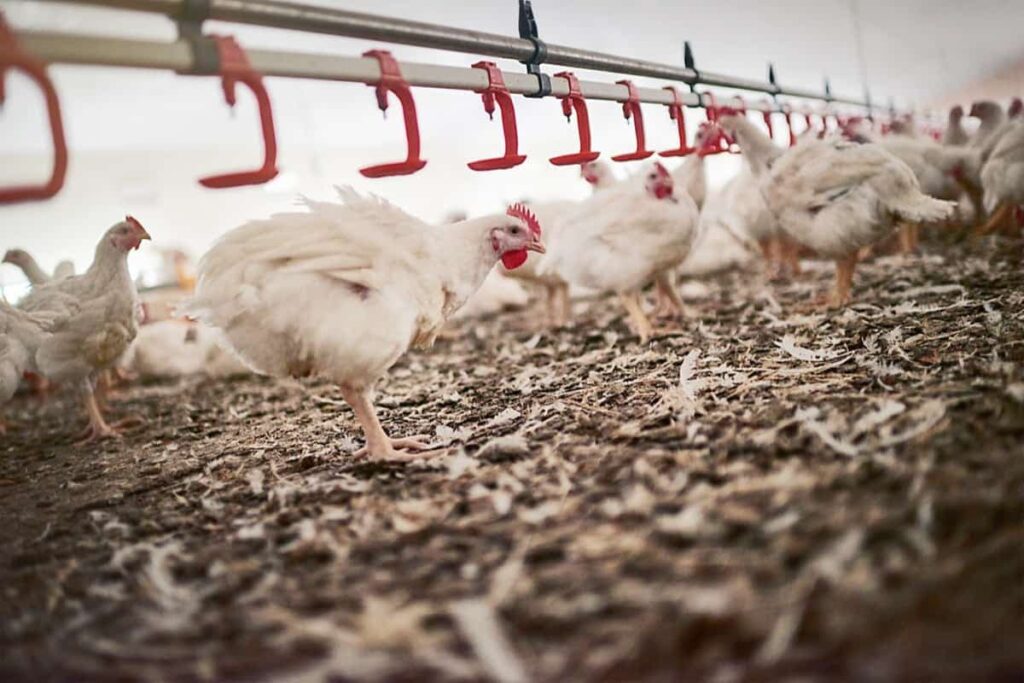Welcome to our blog on poultry farm operations management! In this article, we will dive into the month-wise maintenance practices that can significantly boost your profits in the poultry industry. Effective maintenance is crucial for ensuring the well-being of your birds and optimizing production output. Get ready to enhance your poultry farm operations and maximize your yearly profits!

What is Poultry Farm Operations Management?
Poultry farm operations management refers to the efficient and effective management of all activities in running a poultry farm. It encompasses various tasks such as planning, organizing, implementing, and controlling the operations to ensure the smooth functioning of the farm. Role in this process, providing insights into flock performance, feed consumption, disease monitoring, and financial analysis.
By leveraging this data, farmers can make informed decisions to improve productivity, optimize resource allocation, and maximize profits. Poultry farm operations management is a holistic approach that integrates technology, best practices, and sound management principles to achieve sustainable and profitable poultry production.
Basics of Poultry Farming and Operations Management
- Poultry farming involves raising birds, such as chickens, turkeys, ducks, and geese, primarily for meat and eggs.
- Feeding in commercial poultry production is a highly refined science that maximizes energy intake for growth and fat production.
- High-quality protein sources and essential minerals promote muscle and organ growth, bone development, and egg production.
- Antibiotics are commonly used to stimulate appetite and prevent disease.
- Commercial chickens consume about 2 pounds of feed to produce 1 pound of broiler meat and 2 pounds of feed to lay a dozen eggs.
- Effective management is crucial in poultry farming to provide a controlled environment that prevents crowding, chilling, overheating, and fear.
- Cannibalism is controlled through debeaking and other management practices. Mechanization is used for feeding, watering, egg collection, and cleaning.
- Wire cages with multiple tiers are utilized to save space, improve production, reduce cannibalism, and lower disease and parasite risks.
- Poultry breeding incorporates genetic principles like inbreeding, crossbreeding, and mass selection to enhance meat and egg production.
- Heterosis, or hybrid vigor, is achieved through crossbreeding. The United States has advanced chicken breeding through intensive research, improved breeding stock, management practices, and disease control.
- Modern broiler chickens can reach market weight in five weeks compared to four months in the mid-20th century. Annual egg production per hen has increased significantly.
- Poultry is susceptible to various diseases, but strict sanitary measures, antibiotic use, and vaccines have improved disease control.
- Bird flu, or avian influenza, has caused outbreaks and necessitated the culling of poultry. Parasitic diseases in poultry are controlled through sanitation, prevention, and treatment.
- Chickens are the most mass-produced poultry, with meat production surpassing egg production as a specialized industry in the mid-20th century.
- Different breeds, such as American, Mediterranean, English, and Asiatic, are utilized for industrial production. Turkeys, ducks, geese, guinea fowl, and squabs are also raised for their meat and eggs.
- Turkey’s breeding and farming practices have reduced feed requirements and production time.
- Ducks and geese are raised in limited-scale operations, and guinea fowl and squabs are typically produced on a smaller scale or as gourmet items.
In case you missed it: Sustainable Poultry Farming: Benefits and How to Reduce Your Carbon Footprint with Chickens

Poultry Housing Operations Management in Poultry Farm
A poultry housing system refers to the type and quantity of birdhouses a farm uses to achieve its production goals. It is an essential aspect of poultry farming as it determines the configuration and arrangement of birds, optimizing their productivity and profitability. Just like a professional sports team, where the positioning of players can impact their performance, the strategic design of a poultry housing system drives better results.
Choosing the right housing system at the outset is important because it involves a fixed cost, and making changes later can be costly. Additionally, factors such as production regularity, demand forecasting, and optimizing land use play a crucial role in determining the number and placement of poultry housing structures for successful rearing.
Poultry Rearing Operations Management in Poultry Farm
Poultry rearing systems refer to the various containment strategies for raising layer or broiler chickens during rearing. These systems typically include cages, deep litter systems, or free-range on pasture. The choice of rearing system is important as it directly impacts the control and quality aspects of poultry farming. Controlling the movement and behavior of the flock allows for better management of their situation, activity, access to feed and water, egg deposition (for layers), and manure accumulation.
Caged systems provide precise control but may limit physical and nutritional variability compared to free-range systems. Factors such as land availability, cost efficiency, and consumer preferences should be considered when selecting a rearing system. Finding the right balance between perceived quality, pricing, production efficiency, and operational costs is crucial in making informed decisions.
Poultry Farm Operations and Management Practice for Better Profits
Regarding poultry farming operations and management practices for better profits, there are several key factors to consider. First, selecting a suitable location and building for your farm is crucial. It should be away from the city’s pollution and noise, well-ventilated, and easily accessible. The farm’s shelter should be oriented east-west to minimize excessive sunlight, and there should be enough space to avoid overcrowding, with each bird having at least 2 square feet of area.
Choosing healthy and robust chicks is vital for profitability. Opt for breeds that are adapted to your climate and have high reproductive capacity. Purchase chicks from reputable hatcheries to ensure quality and disease-free stock. Maintaining environmental hygiene is essential to prevent the spread of diseases. Proper ventilation and a minimum distance of 40 feet between shelters help reduce ammonia and carbon dioxide accumulation.
Regular cleaning and disinfection of the premises and equipment and regular removal of dead and weak birds contribute to a healthy environment. Providing high-quality and balanced feed tailored to the age and nutritional requirements of the birds is crucial. Modern poultry diets consist mainly of grains, cereals, oilseeds, protein supplements, and vitamin supplements. Layer feed is rich in calcium and protein, while broiler feed requires higher energy and protein levels to support rapid growth.
Disease prevention through vaccination is vital for maintaining flock health. Regular monitoring of parasites and prompt treatment are important. Sick birds should be isolated and treated accordingly to prevent the spread of illness. Separating flocks of different ages helps minimize disease transmission, especially when introducing younger birds to older ones. Poultry farmers can optimize their operations and maximize profits by following these practices and making informed decisions regarding location, breeding, hygiene, nutrition, and disease management.
In case you missed it: Chicken Farming in Indonesia: Poultry Business Plan, Setup Cost, License, Profit, and Requirements

Poultry Farming Regular Management Practice for Better Profits
Brooding Techniques: In the initial weeks of raising your chickens, making informed decisions is crucial to ensure their optimal growth. These decisions include maintaining good air quality, providing high-quality chicks, ensuring food and water availability, managing litter effectively, and regulating temperature and ventilation.
Daily Feeding and Watering: Once the brooding period is over, the primary focus is raising the birds to maturity. Pay close attention to the quality and availability of food and water, as well as effective litter management, proper temperature control, and adequate ventilation. Neglecting these factors could result in malnourished and sickly birds, leading to potential mortality.
Daily Record Keeping: Keeping detailed records is essential for introducing new birds to your farm. These records should include information on feeding and watering schedules, health records, and financial data. Accurate record-keeping helps in monitoring the progress of your poultry business.
Planned Vaccine Programme: Establish a well-structured vaccination program by working closely with your veterinarian. Neglecting vaccinations can leave your birds susceptible to diseases, harming their health and overall productivity.
Daily Inspection for Disease Signs and Isolation: Regularly observing your birds for any signs of illness is crucial for early disease detection. Prompt isolation of affected birds is vital to prevent the spread of diseases within the flock and minimize potential losses.
Drug Administration: Follow a strict time chart for administering medications and supplements to your birds. Adhering to the prescribed schedule ensures that the birds receive the necessary treatments in a timely manner.
Periodic Litter Disposal and Change: Regularly disposing of and changing litter, including wood shavings, watering cans, and feeding cans, should be part of your scheduled farm activities. This practice helps maintain a clean and hygienic environment for your birds, reducing the risk of diseases and promoting their overall well-being.
Building and Premises: Your farm’s location, size, and layout are vital considerations that can significantly impact your poultry farming operations. Proper planning and maintenance of the farm’s buildings and premises are crucial to the success and profitability of your business.
Cleanliness and Disinfection: Maintaining cleanliness and practicing regular disinfection is essential to uphold biosecurity measures and ensure a healthy farm environment. Proper disinfection helps eliminate harmful microorganisms that could threaten your livestock.
Egg Collection Procedure Interval and Sale: For layer farms, establishing a systematic procedure for egg collection and determining the collection frequency is important to maximize your farm’s productivity and profitability.
Planned Restocking: Develop a well-defined timeline for restocking your poultry farm, taking into consideration your available working capital. This allows for efficient utilization of resources and helps maintain a steady production cycle.
In case you missed it: Farming Business Plan PDF: for Poultry, Livestock, Agriculture, Horticulture, Greenhouse, and Hydroponic

Month-Wise Poultry Farm Operations
Month-Wise Maintenance of Poultry Farm Operations
Regular cleaning and disinfection of facilities, proper ventilation, routine equipment inspections, and timely health monitoring of birds are crucial. Adequate feed, water supply, and waste management contribute to a healthy and profitable poultry farm.
January Month Maintenance for Poultry Farm Operations
During January, it’s best to utilize the winter season to research the laws and regulations related to chicken care. Connect with local feed stores, poultry associations, and experienced chicken keepers to determine your specific goals for raising chickens. Find online chicken associations and clubs that can guide you in choosing the most suitable chicken breeds for your backyard.
February Month Maintenance for Poultry Farm Operations
Hatcheries are preparing for full production by February, with their incubators filled with fertile eggs. This is the ideal time to ensure you have all the necessary equipment and coops or place orders for them. Select your desired breeds and compare pricing and availability from different hatcheries and suppliers. It is recommended to purchase from an NPIP-certified chicken hatchery or verify the validity and quality of the originating breeder or hatchery when buying from intermediaries. Familiarize yourself with chicken lingo to communicate effectively with suppliers. Place your order in February to secure your preferred ship date.
March Month Maintenance for Poultry Farm Operations
As spring arrives, setting up your coop space properly is crucial, ensuring you have all the essential supplies, such as feed and water bowls, heat lamps, and bedding. Predator-proof fencing and coops are necessary for protecting your chickens. Contact your chosen hatchery or supplier to schedule the shipment of chicks.
April Month Maintenance for Poultry Farm Operations
Your happy, healthy, and active chicks will arrive at your home in April. Set up your brooder a day or two before its expected arrival and ensure it is at the right temperature. When you bring the chicks home, place them carefully in the brooder near the food and heat source. You can dip their beaks into sugary water to encourage them to drink and eat quickly. Consider adding vitamins and electrolytes to the water for the first few weeks, as most feed stores and hatcheries provide.
May-June Months Maintenance for Poultry Farm Operations
Your chicks’ temperature, feed, and space requirements will change as they grow. Consult with your supplier or alternative resources to ensure you maintain the proper environment for their well-being. There is no one-size-fits-all approach to raising birds, so find the best methods.
July Month Maintenance for Poultry Farm Operations
Ensure your coop has proper ventilation and provide plenty of water for your chickens during summer. Birds aged 16 weeks and older should be fed layer feed and supplemented with oyster shells for calcium intake. Consider using shade cloths or misters to help them stay cool in the heat.
In case you missed it: Contract Poultry Farming in India: Profits, Companies, Agreement, How it Works, The Pros and Cons

August Month Maintenance for Poultry Farm Operations
Around 17 to 20 weeks, your flock should start laying eggs. Enclosed coops may require additional lighting to encourage egg production. However, don’t worry if you don’t see eggs in August, as some breeds can take up to 28 to 30 weeks to begin laying. Check your coop and nest box areas for gaps allowing predators to enter.
September Month Maintenance for Poultry Farm Operations
Once your flock starts laying eggs, remember that the size and color may vary initially. Collect the eggs regularly, preferably twice daily, to prevent egg pecking. Chickens may develop a habit of pecking eggs if they accidentally break one. Providing additional light can help maintain egg production as the days get shorter. Use this time to check and treat birds for any parasites.
October Month Maintenance for Poultry Farm Operations
During October, continue to monitor your flock’s egg production and address any issues that may arise. Make sure the chickens have access to a balanced diet and clean water. Regularly check for symptoms of pests or diseases to take measures to prevent or treat them. Provide extra insulation in the coop to keep the chickens warm as the weather gets cooler. Consider adding a heat source if necessary, ensuring it is safe and properly installed.
November Month Maintenance for Poultry Farm Operations
With the arrival of winter, it’s essential to take additional steps to protect your chickens from the cold. Insulate the coop further, paying attention to drafts and ensuring adequate ventilation. Use bedding such as straw or wood shavings to provide warmth and insulation on the coop floor. Consider using a heated waterer to prevent the water from freezing. Monitor your flock closely for signs of frostbite or other cold-related issues and take appropriate measures to mitigate them.
December Month Maintenance for Poultry Farm Operations
In December, continue to provide proper care and attention to your chickens during winter. Monitor their health and well-being, especially in cold weather. Make sure their feed and water are always accessible and not frozen. Provide extra treats and high-energy feed to help them maintain their body temperature. Ensure the coop is secure and protected from winter weather conditions and predators. Take time to clean and maintain the coop, removing any droppings or debris that may have accumulated.
In case you missed it: Common Poultry/Chicken Diseases, Symptoms, and Treatment: Check How this Guide Helps Poultry Farmers

Conclusion
Implementing a month-wise maintenance plan for poultry farm operations is crucial for maximizing profits. Farmers can ensure optimal performance, healthy flocks, and sustained financial success by focusing on key areas such as breeding, vaccination, nutrition, and infrastructure.
- How to Raise Pigs in Your Own Backyard: A Comprehensive Guide
- Budget Friendly Sheep Shed Ideas: Cheap and Low-Cost Tips
- How Much Do Cattle Farmers Make: Revenue Streams in Cattle Farming
- Management Pests and Diseases in Your Cotton Field
- Sheep Farming Business Plan for Beginners
- Aquaponic Farming at Home: A Step-By-Step Guide
- Profitable Village Farming Business Ideas in 2024
- High-Yield Aquaculture: Fast-Growing Fish for Farming
- Effective Fish Pond Construction Techniques for Beginners
- Irrigation and Water Management in Pineapple Farming
- Blossom to Harvest: Mastering Flowering and Pollination in Papaya Farming
- Pig Fattening Essentials: From Selection to Sale for Beginners
- Raising Wagyu Cattle: A Complete Guide for Premium Beef Production
- Soil Types and Their Water Holding Capacity
- Optimizing Irrigation Schedules for Coconut Groves for Enhanced Yield
- Espresso Your Garden: Coffee Grounds for Healthier Acid-Loving Plants
- The Best Soil Mix for Snake Plants: How to Mix Your Own Snake Plant Soil
- Green Thumb Success: Expert Tips for Cultivating Greenhouse Beans All Year Round
- Bloom All Year Round: The Ultimate Guide to Indoor Hyacinth Care
- Eco-Friendly Gardening: How to Make Liquid Fertilizer from Kitchen Waste
- Ultimate Guide to Grow Anise in Pots: Explore Seed Propagation to Harvesting
- Guide to Raising Chester White Pigs: Discover Breed Facts to Growth Management
- Mastering the Elegance: The Ultimate Guide to Weeping Cherry Tree Care, Planting, and Maintenance
- Ultimate Guide to Planting Garlic in Grow Bags: Growing Strategies for Beginners
- How to Fix Spider Plant Leaf-Related Problems: Natural and Organic Remedies
- 10 Reasons Why Your Tulsi Plant is Shedding Leaves: Home Remedies and Solutions
- Optimizing Growth and Yield: The Advantages of Palm Bunch Ash Fertilizer
- Utilizing Neem Oil Extract as a Natural Pesticide for Hydrangea
- From Soil to Harvest: Various Ways in Which Farmers Can Use AI Tools
- Steps to Encourage and Induce Citrus Flowers: A Comprehensive Guide
- How to Fix Snake Plant Leaf-Related Issues: Natural and Organic Remedies
- Transform Your Garden into a Fragrant Oasis with Raat Ki Rani (Night Blooming Jasmine)
- Discover the Ideal Chicken Breeds for Philippine Farms
- How to Create a Poultry Egg Farm Business Plan for Profits
- Grow Lemon Cucumbers Like a Pro: Insider Techniques for Bountiful Yields
- Ultimate Guide to Caring for Your Pink Princess Philodendron: Tips for Thriving Variegation
